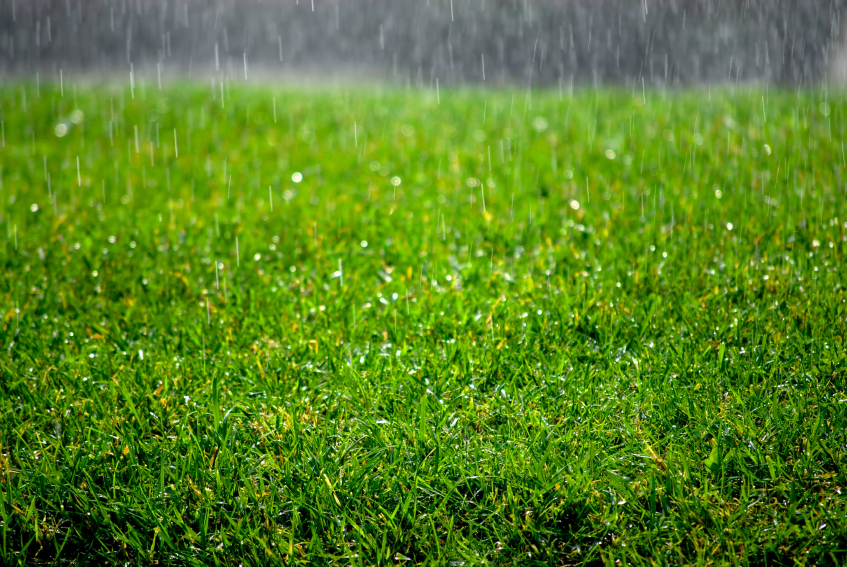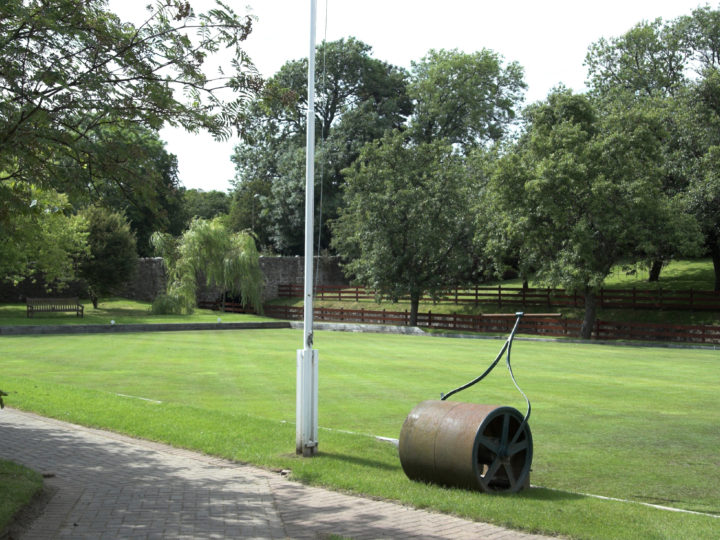
A winter of torrential rain and flooding may have left your lawn a sodden mess. Puddles and surface water may be lying on your lawn and showing little sign of departing. An extended period of flooding can result in root rot and death of the grass so it should not be taken lightly.
There are various steps to take to improve your lawn drainage to prevent a repeat of these problems. Some are expensive and involve installing drains across the lawn. If you are putting in a new lawn this may be something to seriously consider if wet winters become more normal.
However, before despairing, there may be a simpler solution.. Improvements can be made that will reduce or eliminate much surface water using simple techniques that can be done by any gardener.
Water will accumulate on the lawn surface for various reasons. Sometimes it may indeed reflect a major drainage problem, but more commonly the problem is the result of compaction of the upper few centimetres of the soil. The lower layers of soil may be quite capable of carrying away the water but it cannot reach that area as it only slowly penetrates into the soil – the process called infiltration.
If your soil has a significant percentage of clay – a clay loam or clay soil – then surface compaction can easily occur from what soil scientists call ‘traffic’. Not the number 16 bus taking a short-cut across your lawn, but simply children, dogs, that summer garden party, wheelbarrows, lawn mowers and rollers. Even a stroll around the garden will eventually compact the surface of your lawn.
Compaction is the movement of the soil particles into the spaces that normally separate them. Just like tapping a jar of flour to get more into it, vibrations and pressure will gradually cause this to happen in your soil. In garden beds cultivation and digging solve the problem but this is not an option under grass.
If you do garden on a clay soil, try to stay off the lawn for a few days after heavy rain, as soil is most susceptible to compaction when wet and less susceptible when dry. Completely sodden soil will not compact as the water fills the spaces, but it will smear and puddle on the surface with much the same end result.
The dense accumulation of roots and grass stems on the soil surface of your lawn will also restrict the drainage of water into the soil and the combination of compaction and grass growth will seriously slow infiltration of water. Since water movement within the soil slows as it approaches saturation, these problems of course become much more pronounced during extended rainy periods.
So what can be done to reduce this compaction and allow better infiltration of water through the dense surface? For mild to moderate situations hollow-core aeration is the solution. The Yeoman lawn aerator is an excellent hand tool that will remove plugs of soil from your lawn. For large lawns you might consider renting a motorised aerator.
Removing these plugs does two things. It creates direct drainage routes into the lower, un-compacted areas of your soil and it allows the compacted soil to move into the now empty spaces and open up.
The plugs can be raked up or left to be chopped by the mower and the small pieces spread around. They will quickly disappear.
After aeration is also a good time to fertilize the lawn as some of the fertilizer will enter the holes and improve the fertility of the lower soil levels, encouraging deeper rooting.
Installing full drains is the next step if aeration fails to fix the problem. On lawns this usually consists of a several french drains running down the lawn to carry water into a larger drain or channel. The number of drains can be reduced by using narrow slit drains filled with grit and sand running across the lawn. These carry surface water into the main drains. The grass grows into the sand, which must reach the surface for the drain to be effective. This quickly hides the slits. Such a system, which is used on sports turf, will have a dramatic effect on drainage even on very dense, poorly draining soils.
Although expensive to install, this is the ultimate solution to living with persistent rain on heavy soils.




